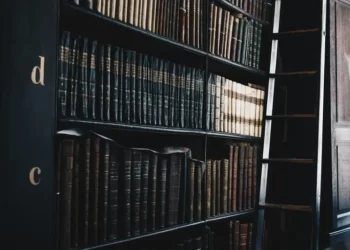Table of Contents
- Defining Pressure Groups
- Types of Pressure Groups
- Functions of Pressure Groups
- Strategies and Tactics of Pressure Groups
- Sociological Perspectives on Pressure Groups
- Conclusion
Pressure groups, often referred to as interest groups or advocacy groups, play a crucial role in the political and social landscapes of modern democracies. They are organized collections of individuals who seek to influence public policy and decision-making processes without seeking formal political office. These groups leverage various methods to assert their influence, ranging from lobbying and public campaigns to direct action and litigation. Understanding pressure groups involves examining their types, functions, strategies, and the sociological implications of their activities.
Defining Pressure Groups
Pressure groups are associations that seek to influence government policy and public opinion on specific issues. Unlike political parties, which aim to gain control of government, pressure groups focus on advocating for particular causes or interests. They can be formed around a wide array of interests, including economic, environmental, social, and ideological concerns. The primary objective of these groups is to ensure that their interests are considered and addressed by policymakers.
Types of Pressure Groups
Sectional Groups
Sectional groups, also known as interest groups, represent specific segments of society. These groups aim to protect and advance the interests of their members. Examples include trade unions, business associations, and professional organizations. Sectional groups often have significant financial resources and organizational structures, which enable them to exert considerable influence on policy decisions that affect their members.
Promotional Groups
Promotional groups, or cause groups, advocate for broader societal issues and are not limited to specific segments of society. These groups are typically concerned with issues such as human rights, environmental protection, and social justice. Unlike sectional groups, promotional groups seek to benefit society as a whole rather than a specific subset of individuals. They often rely on public support and grassroots mobilization to achieve their goals.
Insider and Outsider Groups
Insider groups have established relationships with policymakers and are often consulted by governments during the policy-making process. These groups possess the advantage of having direct access to decision-makers and can influence policy through negotiation and collaboration. In contrast, outsider groups do not have the same level of access and may resort to public campaigns, protests, and media attention to highlight their causes. Both types of groups play vital roles in the democratic process by ensuring diverse perspectives are considered in policy debates.
Functions of Pressure Groups
Representation
One of the primary functions of pressure groups is to represent the interests of their members or the causes they advocate. By organizing collectively, individuals can amplify their voices and increase the likelihood of their concerns being addressed by policymakers. Pressure groups provide a platform for marginalized or underrepresented groups to influence public policy and bring attention to issues that might otherwise be overlooked.
Participation
Pressure groups enhance democratic participation by providing avenues for citizens to engage in the political process beyond voting in elections. They enable individuals to take an active role in advocating for issues they care about, fostering a more engaged and informed citizenry. Through activities such as petitions, public demonstrations, and lobbying efforts, pressure groups facilitate greater public involvement in shaping policy outcomes.
Education
Pressure groups play a crucial role in educating both the public and policymakers about specific issues. They conduct research, disseminate information, and raise awareness about the causes they support. By providing expertise and informed perspectives, pressure groups contribute to more informed and evidence-based policy decisions. Their educational efforts also help to shape public opinion and build broader support for their causes.
Policy Formulation
Many pressure groups actively participate in the policy formulation process by providing input and recommendations to policymakers. Insider groups, in particular, are often involved in drafting legislation, regulatory frameworks, and policy proposals. Through their specialized knowledge and expertise, pressure groups can contribute to the development of policies that are more effective and responsive to the needs of society.
Accountability
Pressure groups serve as watchdogs by holding governments and other powerful entities accountable for their actions. They monitor policy implementation, highlight instances of malpractice or injustice, and advocate for transparency and accountability in public affairs. By scrutinizing the actions of policymakers and advocating for ethical standards, pressure groups contribute to the overall integrity of the political system.
Strategies and Tactics of Pressure Groups
Lobbying
Lobbying is one of the most common and effective strategies employed by pressure groups. It involves direct interaction with policymakers to influence their decisions. Lobbyists provide information, propose policy solutions, and advocate for specific outcomes. Effective lobbying requires building relationships with key decision-makers and presenting well-researched arguments to support the group’s positions.
Public Campaigns
Public campaigns are designed to raise awareness and generate public support for a cause. These campaigns can include various activities such as media outreach, social media engagement, public rallies, and petition drives. By mobilizing public opinion, pressure groups can create a groundswell of support that pressures policymakers to act in accordance with the group’s objectives.
Litigation
Litigation involves using the legal system to advance a group’s objectives. Pressure groups may file lawsuits to challenge existing laws, defend their rights, or compel government action. Litigation can be a powerful tool, especially when legislative or executive avenues are unresponsive to the group’s concerns. Successful legal actions can lead to significant policy changes and set important legal precedents.








